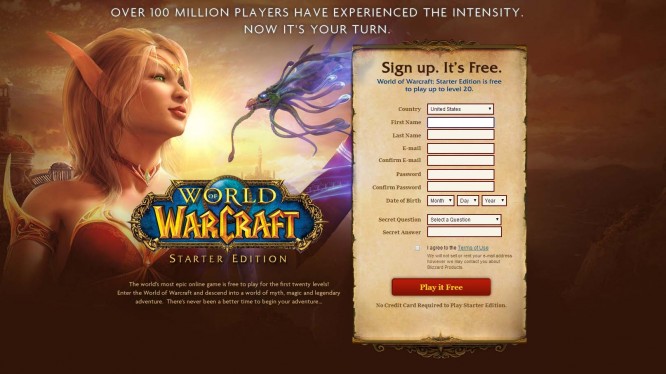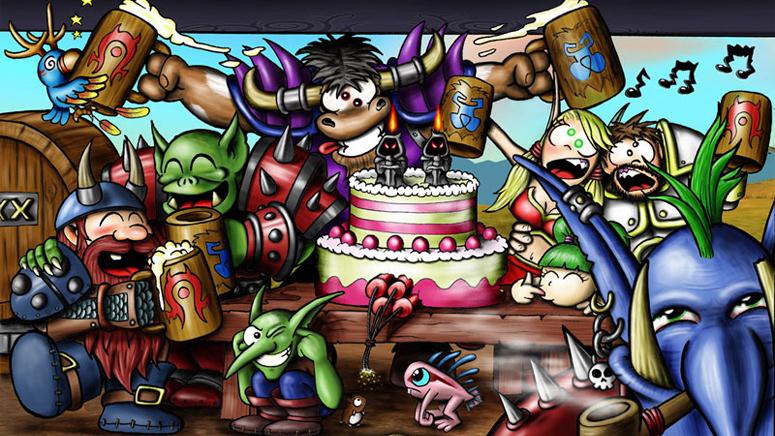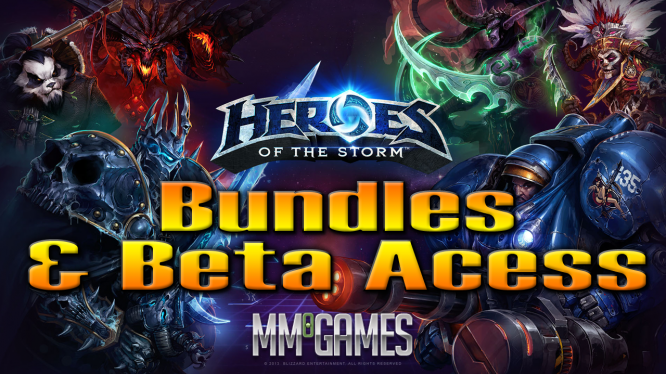

When MapleStory was introduced as one of the first free-to-play MMOs in 2002, it was hailed by gamers as a revolution of the persistent world genre. Since, hundreds of MMOs, including the widely popular Guild Wars 2 and the recently restructured Star Wars: The Old Republic have forgone the antiquated subscription-based model in favor of one where players are freed from the shackles of monthly monetary commitment.
But in reality, the free-to-play label is often little more than a cleverly veiled attempt by the developer to draw players into a larger, highly monetized world – one in which players only experience a minuscule segment of the game for free. It’s for this reason, among others which we will explore in this iteration of versus, that the subscription model remains the preferred choice of some gamers.
One of the main challenges facing free-to-play MMO developers is how to consistently deliver fresh new content on an unreliable budget. Some, like Guild Wars 2 developer ArenaNet, solved this quagmire by taking a two-fold approach. First, by charging players a hefty one-time acquisition fee, the developer ensured that the cost of the first several content patches would be covered. Then, by launching an in-game store where players could purchase aesthetic upgrades, ArenaNet paved the way for future patches to come.

Note the emphasis on the word “aesthetic.” Not a single one of the game’s real-money items grants players an edge, not even a nominal one. Nor is the player ever required to purchase access to restricted zones. It’s this “no strings attached” approach to free-to-play gaming that has helped Guild Wars 2 retain and grow its loyal fan-base.
But Guild Wars 2 has something going for it that most MMO developers do not, and that’s brand recognition. Due to the success of its predecessor, and its affiliation with prominent MMO developer and publisher NC Soft, Guild Wars 2 can afford to take a more conservative approach to monetary acquisition. Others f2p MMOs cannot, and must rely on game enhancing micro-transactions or other monetizing means to stay afloat.
Unfortunately, some developers take this practice to an extreme, appearing more interested in pilfering money from unsuspecting gamers than providing an authentic free-to-play gaming experience. Take the children’s MMO Wizard 101 for example. Although it’s advertised as an f2p MMO that kids and adults can play together, progressing through the game without making a single purchase is an exercise in torture, the likes of which would make Diablo cringe in disbelief.
Never before have I seen a children’s game monetized in such an egregious fashion. From prepaid cards to game bundles, purchasable gear, zone upgrades and much more, Wizard 101 is cash-grab at its most despicable, and a testament to why today’s serious MMO gamer does their homework before downloading what appears on the surface to be an innocuous free-to-play romp.

Unfortunately, the majority of f2p MMOs on the market today adhere more closely to the Wizard 101 model than the gold standard of excellence set forth by Guild Wars 2. As a result, I’d argue that gamers are likely to spend more on a f2p MMO than they would on one that automatically extracts recurrent fees from their bank account.
Look at it this way. If gamers purchase a traditional MMO like The Elder Scrolls Online they know right off the bat that for $15 per month they will receive access to all current and future content patches, with the only optional purchases occurring in the form of possible expansion packs. Thus, the fiscally conscious gamer can reliably set aside $180 at the beginning of the year and feel confidence that it will cover their annual ESO expenditures.
The f2p aficionado doesn’t have things quite so easy. As much as they hate to admit it, most f2p MMO gamers probably spend more money on games than they originally envision. And whereas the fees associated with subscription-based games are regular and reliable, an f2p MMO can cost the gamer anywhere from virtually nothing to upwards of hundreds, or even thousands of dollars, per year. Thus, from the vantage point of the frugal yet ambitious gamer, the subscription-based model is best.
Compounding matters further, the f2p consumer has no idea when the game publisher might decide that the amount of revenue an MMO is generating simply isn’t enough to justify the high costs of maintaining servers and churning out new content. All too often, gamers spend a confounding amount of money on an f2p game only be left out in the cold a short time later.
That being said, free-to-play MMOs hold several distinct advantages over their subscription-based counterparts, primarily in their ability to draw player interest and to justify a smaller scope.
So which one is better? The answer may be neither.
Allow me to elaborate:

Some MMOs have opted into a more hybridized payment paradigm that incorporates the most player-friendly aspects of both the f2p and subscription models, while still allowing the developer to generate enough reliable income to release regular content. Even World of Warcraft, which for years observed a strict subscription-based model, has recently adapted its structure to allow players to check out the game’s first twenty levels for free.
WoW has also supplemented its waning subscription numbers with purchasable novelty items and other revenue generating means, such as character transfers and other player incentives. Altogether, this altered model encourages both new and old players alike to traverse the now 10-year-old world of Azeroth – and that’s no small feat.
More modern MMOs have adapted an even more radical model. In what amounts to a sheer stroke of genius, the upcoming NC Soft title WildStar will offer players two payment options: either pay a recurrent subscription fee of $15 per month, or purchase C.R.E.D.D (which equates to a one-month subscription) with in-game gold. Because the amount of gold needed to purchase C.R.E.D.D will change based on the game’s economy, gamers who seek a free month’s membership will often be forced to aspire to even greater heights as the months roll by.
In other words, players who invest a significant amount of time in the WIldStar world will be rewarded with free playing time. Again, genius.

To conclude, the MMO genre has evolved to the point where purely subscription-based or freemium models are no longer the best means in which developers can juxtapose player attentiveness with steady revenue. Instead, developers must rely on either a blending of the two or an evolved model, while keeping in mind that quality games generate much of their income based on their own merits.




 Qelric Outlines The New Heroes of The Storm Founders Pack .
Qelric Outlines The New Heroes of The Storm Founders Pack . Lineage 2: Become a Sponsor and Profit from Buffs
Lineage 2: Become a Sponsor and Profit from Buffs The Final Frontier: A Guide to Margin Trading for Newbies (Part 1) .
The Final Frontier: A Guide to Margin Trading for Newbies (Part 1) . An Asgardian Adventure Interview .
An Asgardian Adventure Interview . Bel's Blog Bonanza - Developer Appreciation Week 2015 Edition .
Bel's Blog Bonanza - Developer Appreciation Week 2015 Edition .